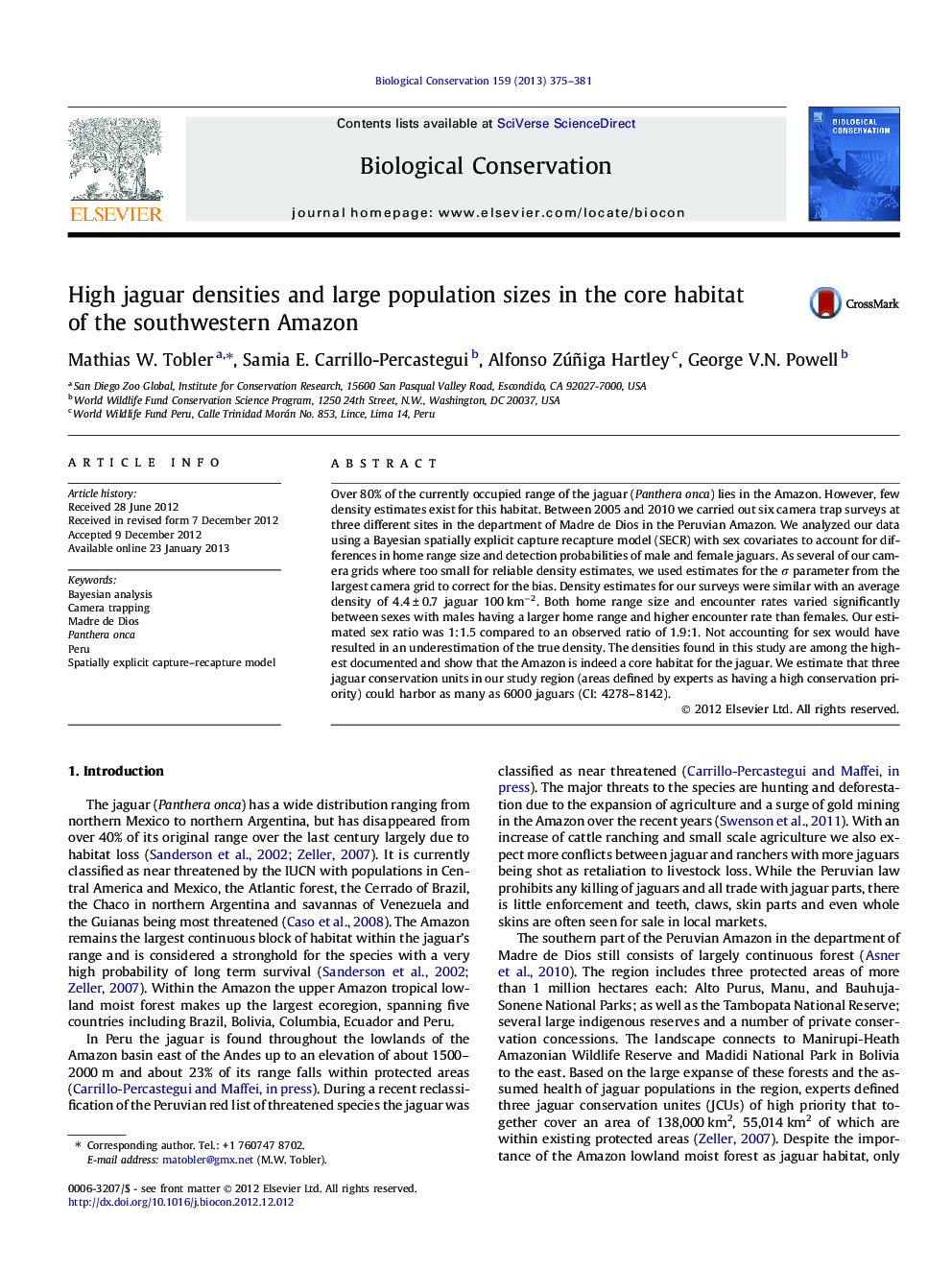| Article ID | Journal | Published Year | Pages | File Type |
|---|---|---|---|---|
| 6300966 | Biological Conservation | 2013 | 7 Pages |
Over 80% of the currently occupied range of the jaguar (Panthera onca) lies in the Amazon. However, few density estimates exist for this habitat. Between 2005 and 2010 we carried out six camera trap surveys at three different sites in the department of Madre de Dios in the Peruvian Amazon. We analyzed our data using a Bayesian spatially explicit capture recapture model (SECR) with sex covariates to account for differences in home range size and detection probabilities of male and female jaguars. As several of our camera grids where too small for reliable density estimates, we used estimates for the Ï parameter from the largest camera grid to correct for the bias. Density estimates for our surveys were similar with an average density of 4.4 ± 0.7 jaguar 100 kmâ2. Both home range size and encounter rates varied significantly between sexes with males having a larger home range and higher encounter rate than females. Our estimated sex ratio was 1:1.5 compared to an observed ratio of 1.9:1. Not accounting for sex would have resulted in an underestimation of the true density. The densities found in this study are among the highest documented and show that the Amazon is indeed a core habitat for the jaguar. We estimate that three jaguar conservation units in our study region (areas defined by experts as having a high conservation priority) could harbor as many as 6000 jaguars (CI: 4278-8142).
⺠Including sex covariates in spatially explicit capture-recapture models improves density estimates for jaguars. ⺠Borrowing data from large camera trap surveys can improve estimates for small camera polygons. ⺠We found a high average density of 4.4 ± 07 jaguars 100 kmâ2 in four camera trap surveys from the Peruvian Amazon. ⺠The southwestern Amazon harbors large jaguar populations and should be considered a core habitat for the species.
